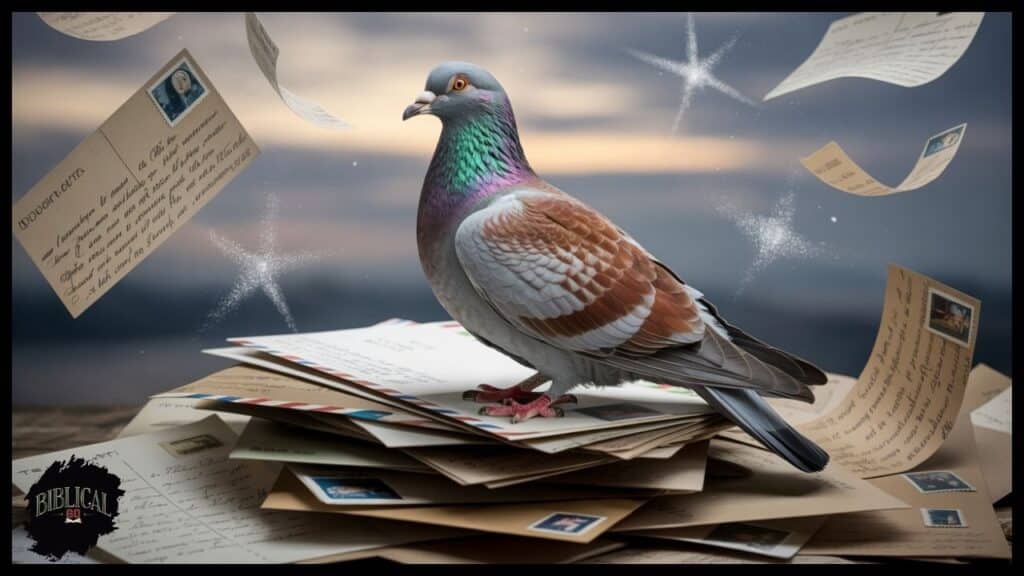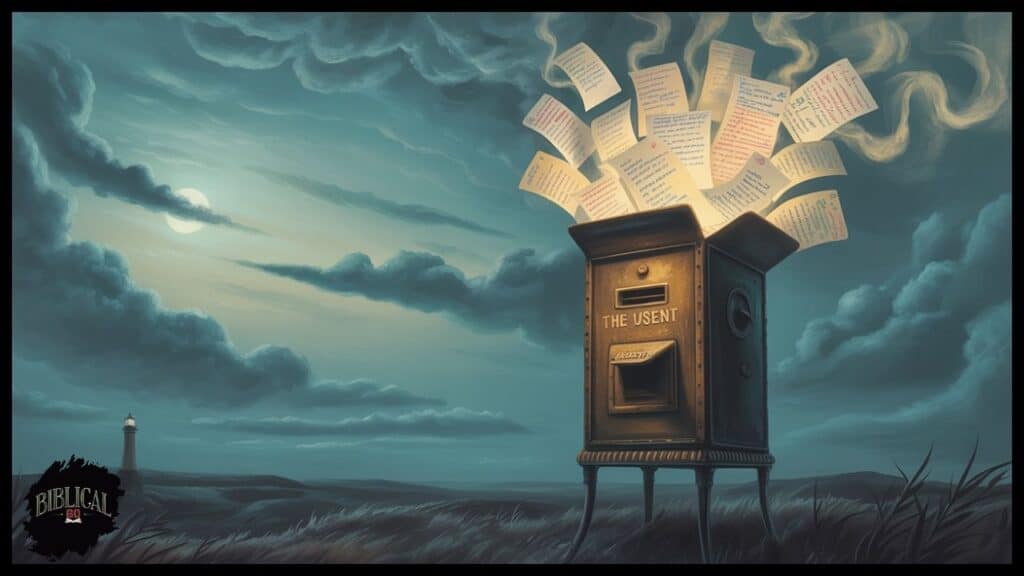In a world where we craft perfect Instagram captions and carefully curate our digital presence, there exists a raw, unfiltered space where vulnerability meets authenticity. The Unsent Project has become a global phenomenon, collecting over 5 million anonymous submissions of messages that were never meant to be sent yet desperately needed to be written.
When Words Stay Silent
Picture this: you’re lying awake at 3 AM, phone in hand, typing out a message to someone who broke your heart three years ago. Your thumb hovers over the send button. Then you delete it. That deleted message? It might have found its perfect home in The Unsent Project.
What is the Unsent Project? It’s more than just a collection of unsent messages it’s a digital archive that captures the most honest moments of human emotion. Since 2015, this anonymous platform has transformed into a global repository of unspoken words, where millions of people find solace in shared vulnerability.
The numbers tell a compelling story:
- 5+ million messages submitted globally
- 500,000+ Instagram followers
- Messages from every continent
- 150+ countries represented
- Daily submissions averaging 1,000+ messages
Genesis: How One Artist’s Heartbreak Became a Global Movement
The Unsent Project began with Rora Blue, an artist nursing her own broken heart in 2015. After writing countless messages to her ex that she’d never send, Blue wondered if others carried similar emotional burdens. Her simple Instagram post asking people to submit their unsent love messages sparked something unprecedented.
“I never expected it to resonate with so many people,” Blue later reflected. “I just wanted to create a safe space for emotional expression.”
The project’s evolution timeline reveals its organic growth:
| Year | Milestone | Significance |
|---|---|---|
| 2015 | Project launch | First 100 submissions |
| 2016 | Viral breakthrough | 10,000 followers gained |
| 2018 | International recognition | Featured in major media outlets |
| 2020 | Pandemic surge | 300% increase in submissions |
| 2024 | 5 million messages | Global cultural phenomenon |
What started as personal healing through art evolved into a global movement that redefined how we process suppressed emotions.
The Mechanics: How Raw Emotion Becomes Digital Art
The Unsent Project operates with elegant simplicity. Here’s how your unspoken feelings become part of this emotional archive:
Submission Process
- Write your message – No length restrictions, no format requirements
- Include the recipient’s first name – This becomes your message’s identifier
- Submit anonymously – Zero personal information required
- Automatic color assignment – Recipients receive color codes based on emotional tone
Color Psychology in Action
The color-coded messages aren’t arbitrary they’re carefully chosen to reflect emotional resonance:
- Red: Love, passion, intense emotion
- Blue: Sadness, longing, melancholy
- Gray: Regret, uncertainty, numbness
- Green: Growth, acceptance, moving forward
- Purple: Mystery, complexity, transformation
This emotion-based message categorization helps users navigate the searchable archive by feeling rather than just name.
The Curation Process
Every submission undergoes careful review:
- Content moderation for safety
- Emotional authenticity verification
- Spam and abuse filtering
- Cultural sensitivity checks
- Privacy protection measures
The Psychology: Why We Write What We Can’t Send
Therapeutic writing isn’t just a feel-good concept it’s backed by solid research. Studies show that expressive writing can:
- Reduce stress hormones by up to 25%
- Improve immune function
- Decrease anxiety and depression symptoms
- Enhance emotional processing
- Provide psychological catharsis
Dr. James Pennebaker’s groundbreaking research on expressive writing found that people who wrote about traumatic experiences for just 15 minutes over four days showed significant improvements in physical and mental health.
The Unsent Project taps into this therapeutic power while adding crucial elements:
- Anonymity removes social judgment
- Shared experience reduces isolation
- Artistic presentation transforms pain into beauty
- Global community provides connection without exposure

The Human Tapestry: What 5 Million Messages Reveal About Us
Analysis of The Unsent Project’s submissions reveals fascinating patterns about human nature:
Most Common Recipients
- Ex-romantic partners (42%)
- Deceased loved ones (28%)
- Estranged family members (15%)
- Friends who drifted away (10%)
- Unrequited loves (5%)
Geographic Emotional Patterns
Digital emotional expression varies culturally:
- North America: Direct, confrontational messages
- Europe: Philosophical, reflective tone
- Asia: Subtle, metaphorical language
- South America: Passionate, poetic expressions
- Africa: Community-focused, family-oriented messages
Age Demographics and Generational Differences
- Gen Z (18-24): 35% of submissions, focus on first love and identity
- Millennials (25-40): 40% of submissions, career and relationship regret
- Gen X (41-56): 20% of submissions, family and closure themes
- Boomers (57+): 5% of submissions, grief and legacy messages
Digital Empathy: How Technology Transforms Emotional Connection
The Unsent Project represents a new form of digital intimacy one where strangers connect through shared vulnerability without ever meeting. This anonymous emotional platform has created what researchers call “parasocial healing” finding comfort in others’ experiences without direct interaction.
Breaking Down Isolation
The project’s global impact extends beyond individual healing:
- Mental health awareness increased among users
- Reduced stigma around emotional expression
- Community building through shared pain
- Cultural exchange through universal emotions
Viral Moments That Sparked Conversations
Several submissions have transcended the platform:
- A message to a deceased father went viral, sparking conversations about grief
- A teenager’s first love message became a TikTok phenomenon
- A regret-filled message inspired a documentary short film
Beyond the Screen: Real-World Impact and Recognition
The Unsent Project has evolved beyond social media into legitimate cultural recognition:
Gallery Exhibitions
- New York Modern Art Museum featured selections (2019)
- London Digital Art Festival dedicated entire section (2020)
- Tokyo Contemporary Gallery showcased translated messages (2021)
Academic Recognition
Universities worldwide have studied the project:
- Harvard Psychology Department: Emotional processing research
- Stanford Digital Humanities: Anonymous submission patterns
- MIT Media Lab: Color-coding effectiveness studies
Mental Health Endorsements
Professional organizations have recognized the project’s value:
- American Psychological Association cited therapeutic benefits
- World Health Organization referenced in digital mental health reports
- National Alliance on Mental Illness recommended as supplementary tool
The Dark Side: Privacy, Ethics, and Emotional Exploitation
No platform dealing with vulnerable emotional content is without concerns:
Privacy Challenges
- Data protection for sensitive content
- Anonymity preservation across platforms
- Potential identification through writing patterns
- Legal compliance across international borders
Ethical Considerations
- Consent from mentioned individuals
- Potential harm to message recipients
- Commercialization of grief and pain
- Cultural appropriation of emotional expression
Moderation Difficulties
Managing millions of emotional submissions presents unique challenges:
- Suicide prevention protocols
- Abuse content identification
- Cultural sensitivity across global submissions
- False authenticity detection
Success Stories: When Silence Breaks Into Healing
Despite concerns, The Unsent Project has documented numerous positive outcomes:
Closure Through Submission
Sarah, 28, from Canada: “Writing to my deceased grandmother helped me process grief I’d carried for years. Seeing others’ messages to lost loved ones made me feel less alone.”
Relationship Healing
Marcus, 34, from Australia: “After writing to my estranged brother, I realized I was ready to reach out for real. The project gave me practice with vulnerability.”
Mental Health Improvement
Dr. Lisa Chen, therapist: “I’ve had multiple clients reference The Unsent Project as a turning point in their emotional processing. It’s not therapy, but it’s therapeutic.”

The Competition: How Unsent Project Stands Apart
While platforms like PostSecret paved the way for anonymous confession, The Unsent Project offers unique advantages:
Comparison Table
| Feature | The Unsent Project | PostSecret | Other Platforms |
|---|---|---|---|
| Format | Text-based messages | Artistic postcards | Mixed media |
| Interaction | Searchable by name | One-way viewing | Limited engagement |
| Frequency | Daily updates | Weekly posts | Irregular |
| Focus | Unsent messages specifically | General secrets | Varied confessions |
| Community | Comment engagement | Minimal interaction | Platform-dependent |
| Accessibility | Free, global | Free, limited reach | Often monetized |
Unique Differentiators
- Searchable archive by recipient name
- Color-coded emotional categorization
- Direct message format maintains authenticity
- Interactive community through comments
- Global accessibility without barriers
Future Horizons: Where Silent Voices Lead Us Next
The Unsent Project continues evolving with ambitious plans:
Technological Expansion
- AI-powered emotion analysis for better categorization
- Multi-language support for global accessibility
- Voice message integration for audio submissions
- VR experience for immersive emotional connection
Educational Partnerships
- University collaboration for emotional intelligence research
- High school programs for healthy emotional expression
- Mental health integration with therapy platforms
- Creative writing curriculum inclusion
Research Initiatives
- Longitudinal studies on submission patterns
- Cultural emotion mapping across global submissions
- Therapeutic effectiveness measurement
- Digital empathy development research
Getting Involved: Your Message Matters
Ready to contribute your unspoken words to this emotional archive?
Submission Guidelines
- Be authentic – Honest emotions resonate most
- Respect privacy – Use only first names
- Consider impact – Your words might help others heal
- Stay safe – Don’t include identifying information
Ways to Support
- Share meaningful messages on social media
- Engage respectfully with others’ submissions
- Recommend to friends who might benefit
- Support mental health resources in your community
Safety Resources
If reading emotional content triggers distress:
- National Suicide Prevention Lifeline: 988
- Crisis Text Line: Text HOME to 741741
- International Association for Suicide Prevention: iasp.info
Essential Questions Answered
How do I submit to The Unsent Project?
Simply email your message to [email protected] with the recipient’s first name. No personal information required.
Can I search for specific messages?
Yes! The searchable archive allows you to find messages by recipient name, making it easy to see if others have written to someone with the same name as your intended recipient.
Is my privacy protected?
Absolutely. The Unsent Project never collects personal information and operates on complete anonymity.
What makes messages go viral?
Messages that resonate universally dealing with first love, loss, regret, or healing tend to receive the most engagement and sharing.
How does the color system work?
Emotional tone determines color assignment through a combination of keyword analysis and manual curation, helping users navigate the archive by feeling.
The Ripple Effect: When Silence Speaks Volumes
The Unsent Project has accomplished something remarkable: it’s transformed our unspoken words into a powerful force for connection and healing. In a digital age often criticized for superficiality, this anonymous platform proves that technology can facilitate profound emotional authenticity.
The project’s global impact extends far beyond its 5 million messages. It’s created a new model for digital empathy, showing that we can connect meaningfully without sacrificing privacy or safety. It’s proven that creative expression can emerge from pain, and that shared experiences can heal isolation.
Perhaps most importantly, The Unsent Project reminds us that everyone carries unsent messages words of love, regret, longing, and closure that deserve acknowledgment. Whether or not we ever send them, writing them down can be the first step toward emotional healing.
Your unspoken words have power. Your emotional expression matters. And in a world of constant connection, sometimes the most profound communication happens in the spaces between in the messages we write but never send, in the vulnerability we share with strangers, and in the silence that speaks volumes.
The Unsent Project continues to grow, one anonymous message at a time, proving that our suppressed emotions don’t have to stay buried. They can become art, healing, and connection. They can become part of something bigger than ourselves a global tapestry of human experience that reminds us we’re never truly alone in our feelings.
What message would you write if you knew it would never be sent but might help someone else heal?
Conclusion
The Unsent Project stands as a profound testament to the healing power of unspoken words and shared vulnerability in our digital age. With over 5 million anonymous submissions from around the globe, this emotional archive has transformed individual pain into collective healing, proving that our deepest regrets, longing, and love can find purpose even when they remain unsent.
Through its simple yet powerful platform, The Unsent Project has created something extraordinary: a space where emotional authenticity thrives, where strangers connect through mutual understanding, and where the messages we never send become the bridges that heal us all.
In a world obsessed with perfect communication, this global movement reminds us that sometimes our most honest emotional expression happens in the silence between what we feel and what we say and that silence, when shared, can speak louder than any words we might actually send.
FAQs: The Unsent Project
What happens to my message after I submit it to The Unsent Project?
Once you submit your unsent message to The Unsent Project, it undergoes a careful curation process where it’s assigned a color based on its emotional tone, completely stripped of any identifying information, and then added to the searchable archive. Your message becomes part of a global collection of over 5 million anonymous submissions, where it can provide comfort and connection to others who have experienced similar emotions. The Unsent Project ensures complete anonymity while transforming your unspoken words into a piece of digital art that contributes to worldwide emotional healing.
Can I find messages written to the same person I want to write to in The Unsent Project?
Absolutely! One of The Unsent Project’s most powerful features is its searchable archive that allows you to look up messages by recipient’s first name. If you’re thinking about writing to someone named “Sarah” or “Michael,” you can search The Unsent Project to read dozens or even hundreds of messages others have written to people with the same name. This feature often provides incredible comfort, showing you that your feelings of love, regret, or longing are shared by countless others around the world.
How does The Unsent Project choose which messages to feature on social media?
The Unsent Project features messages that demonstrate universal emotional resonance and authentic vulnerability. The selection process focuses on submissions that capture common human experiences like first love, grief, closure, or healing in particularly moving or relatable ways. Messages that spark meaningful conversations about emotional expression or help others feel less alone in their struggles are more likely to be shared. The project prioritizes emotional authenticity over shock value, ensuring that featured content serves the mission of creating genuine connection through shared experiences.
Is The Unsent Project only for romantic messages, or can I submit other types of unsent messages?
While The Unsent Project began with unsent love messages, it has evolved to welcome all forms of unspoken words and emotional expression. You can submit messages to deceased family members, estranged friends, former colleagues, or even to yourself. The platform embraces messages of regret, gratitude, anger, forgiveness, and longing regardless of the relationship type. The Unsent Project recognizes that healing comes in many forms, and every type of unsent message has the potential to create meaningful connection and catharsis for both the writer and readers.
What makes The Unsent Project different from writing in a private journal or diary?
Unlike private journaling, The Unsent Project transforms your personal healing into collective empowerment through anonymous sharing. While a diary keeps your thoughts isolated, The Unsent Project allows your emotional expression to become part of a global community where your words might provide comfort to someone experiencing similar pain. The platform’s color-coded system, searchable archive, and interactive community create a unique therapeutic experience that combines the benefits of expressive writing with the power of shared vulnerability. The Unsent Project proves that sometimes the most profound healing happens when we realize we’re not alone in our feelings.
Read more knowledgeable blogs on Biblical Go

Piper McMillan is a devoted writer and Bible enthusiast, offering insightful guides on Bible verses. Her blog provides practical interpretations and reflections, helping readers deepen their faith and understanding of Scripture through accessible and inspiring content.



